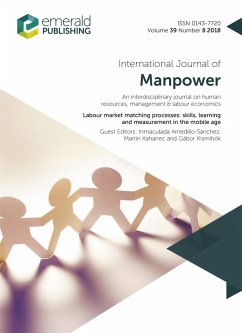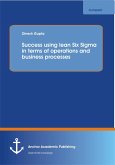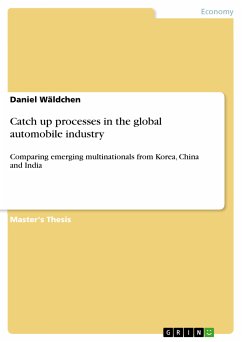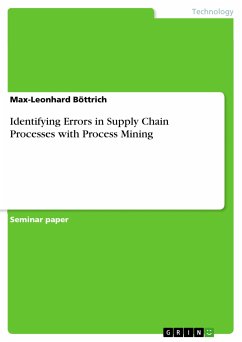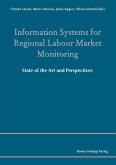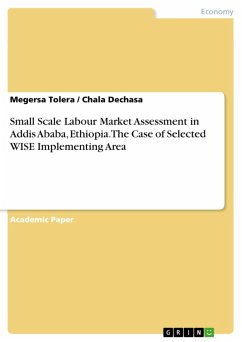This special issue entitled Labour Market Matching Processes: Skills, Learning and Measurement in the Mobile Age results from a collaboration among a group of enthusiastic academics from the fields of Labour Economics, Lifelong Learning, Human Resource Management, Sociology of Occupations and Knowledge Management, who in the early 2010s set out to explore how different disciplines measure, understand and explain mismatches in European labor markets, and what avenues for better labor market matching they propose. Exploring the insights from each of the disciplines, and synergies from an interdisciplinary dialogue, researchers from the several institutes, as well as a number of Associated Partners, joined forces in the framework of the Eduworks project. This project resulted in more than a hundred exciting and novel publications in this unique interdisciplinary topic, contributing to the development of cutting edge methods in web data analysis, and providing novel insights in hotly debated topics such as migration and labour, the future of work or learning analytics. Editors selected eight papers for this special issue. Bustillo et al. present a comprehensive review of the different strategies that can be followed to measure over-education, and discusses the implications of using alternative methodologies. Exploiting the Programme for the International Assessment of Adult Competencies 2012 (PIAAC) and the European Labour Force Survey 1998-2013 (EU-LFS) they study the evolution and convergence of incidence of over-education cross 22 countries in Europe for university graduates. Tijdens et al. explore the skill mismatch comparing educational requirements versus attainments by occupation. Few studies have been able to measure skills mismatch, because information about the demand side of the labour market is lacking. This problem can be solved by aggregating required skill levels in job ads and attained levels of jobholders into occupations, and comparing required versus attained skill levels per occupation. Pedraza et al. present a matching process before and after the Great Recession in the Netherlands. Using data from 2001 to 2014, the paper studies the Dutch labour market matching process accounting for the three labour market states and their heterogeneities. The paper contributes to current discussion about the specification of the matching function and the assumption of constant returns to scale when using unemployment as a labour supply measure. Vas et al. explore the effect of concept level connections on learning performance. Employers expect graduates to possess self-regulatory skills in learning and consider them more important than the degree qualification. This paper is the first to identify how the application of semantic technologies and networks can contribute to the improvement of these skills and provide means for the practical implementation of the connectivism learning theory. Chala et al. looked at the technical aspects of matching job seekers and available job vacancies on the basis of semantic software technology. The novel aspect of their approach is their bi-directional matching algorithm, which computes the degree of semantic similarity between job-seeker qualifications and job requirements provided by employers, through job vacancies. Ulceluse and Kahanec investigate the effect of employment protection legislation on native and immigrant self-employment as a vehicle of skill matching. The analysis covering 18 European countries over the period 1995-2013 finds a positive effect of EPL of regular employment on native self-employment and an indication of a negative effect on immigrant self-employment. Arnedillo-Sanchez et al. investigates if and how employers screen candidates' social media profiles to identify personal employability attributes. In so doing, it aims to shed light into the potential mismatch between the personal purpose of social media and recruiters' job-related use of this data. After delivering rESSuME: Employability Skills Social Media survey; to 708 employers in the UK and the US, the 415 completed surveys were statically analysed. The results show that more than 75% of those surveyed use Facebook to screen most candidates. Finally, the paper by Pajic et al. looks at how nurses in Hungary can adapt to the fast changing nursing jobs in health care. The authors put significant effort to translate the Career Adaptability Scale (CAAS) to Hungarian and adapt it to the nursing occupation. With their survey study, they focused on the types of adaptive behaviors, what Hungarian nurses show on the work-floor. They show that besides traditional nursing knowledge, it makes a lot of sense to equip nurses with lifelong learning skills, enabling them to continuously update their technical knowledge about nursing, but also think proactively their roles and careers as nurses in the 21st century.
Dieser Download kann aus rechtlichen Gründen nur mit Rechnungsadresse in A, B, BG, CY, CZ, D, DK, EW, E, FIN, F, GR, HR, H, IRL, I, LT, L, LR, M, NL, PL, P, R, S, SLO, SK ausgeliefert werden.

